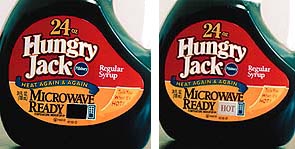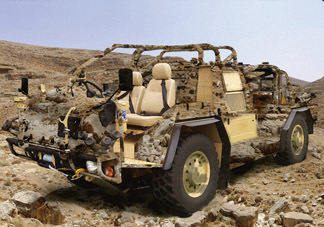Prepress & Screen Making
Published
10 years agoon

Squeegee sharpeners recondition production-worn squeegee blades and make these critical, but often overlooked, tools ready to return to press. Dull edges, nicks, and uneven profiles are some of the problems that can prevent the squeegee from properly playing its vital role in transferring ink to the substrate.
Squeegee sharpeners recondition production-worn squeegee blades and make these critical, but often overlooked, tools ready to return to press. Dull edges, nicks, and uneven profiles are some of the problems that can prevent the squeegee from properly playing its vital role in transferring ink to the substrate.
Normal wear and tear from printing can lead to defects in the squeegee blade, as can exposure to inks and chemicals, mishandling, and improper storage. The squeegee sharpener is the tool that screen printers use to restore the squeegee blade’s edge so the squeegee can be brought back to action. Squeegee sharpeners are available in different sizes and configurations.
Squeegee grinders
Squeegee grinders use abrasives to remove material from the squeegee blade. The two most common types are belt and wheel grinders. Long-belt grinders are the oldest kind. They use a continuous belt that spans the length of the squeegee blade so that the entire length of the blade may be held against the belt during grinding. Wheels or pulleys drive the belt. Operators can build fixtures to hold squeegee blades at different angles. The use of such jigs enable the grinder to produce custom blade profiles and edge characteristics.
Short-belt grinders (Figure 1) also use a grinding belt and pulleys or wheels as drivers, but the squeegee is held still while the belt-driving system travels from one end of the squeegee blade to the other. The single point of contact made between the moving belt and the squeegee blade’s surface puts less pressure on the squeegee, which means a reduction in blade deformation during grinding. Edge straightness and uniformity of height also improve when the holding device and wheel movement are held parallel.
Heat generation, tearing, and material buildup are among the challenges associated with belt grinders. Friction creates heat, and pressure causes deflection. A tearing effect causes little peaks and valleys on the edge of the squeegee blade. Those peaks will break off, and the valleys tend to cause streaks in the prints. Ground urethane can become lodged in the abrasives embedded in the grinding belt. When enough squeegee material builds up on the belt, the machine may grind erratically or ineffectively.
Ground urethane can become lodged in the abrasives embedded in the grinding belt. When enough squeegee material builds up on the belt, the machine may grind erratically or ineffectively. Rogers says lack of a uniform grind across the blade and a reduction in material removal are tell-tale signs of urethane buildup on the grinding belt.
Wheel-based sharpeners (Figure 2) are engineered to be faster, more consistent, and easier to use. The grinder may be a stone, diamond wheel, or an abrasive belt wrapped around a wheel. Diamond wheels, for example, can be manufactured to produce certain blade profiles and changed out as necessary (Figure 3). Diamond wheels are designed to wear at a slower rate than stones, but both should be routinely checked for proper alignment. As is the case with long- and short-belt machines, the belt-wrapped wheel can generate excessive heat and lose efficiency as blade materials build up on the belt.
Manufacturers have added features and functions to the squeegee grinders in order to deal with temperature management, debris removal, and squeegee-blade handling. Cooled pulleys and tooling or machine components designed to naturally dissipate heat are some of the tactics used to prevent temperatures from climbing too high. Vacuum systems are integrated in some units to help remove urethane dust and particulates and prevent them from clogging the grinding media. In some cases, the operator need only attach a vacuum cleaner to a port. Finally, mechanical and pneumatic clamps are used to hold the squeegee blade steady during grinding, thereby further ensuring the production of a straight edge and uniform height.
Squeegee cutters
Squeegee cutters use knives, either stationary or rotating, to remove material. Some machines heat the knives to aid the cutting process. These knives are heated to 120-130°F, a bit more than half as hot as the melting point of the squeegee-blade material.
Cold-knife machines may come standard with cooling/lubricating systems to aid the cutting process and prevent problems associated heat buildup from occurring. Some squeegee cutters use knives that can be bought at hardware and grocery stores, such as carpet blades and injector-style razor blades. Other units require the use of proprietary blade systems. Either way, these machines can remove squeegee-blade material without generating dust and debris. That attribute makes squeegee cutters popular in industrial and specialty screen-printing operations in which production must be confined to a clean room.
Squeegee cutters are generally more expensive than belt and wheel systems, but the performance they’re designed to deliver can offset the price. Operator experience weighs heavily on the edge quality produced by a grinding machine, but the level of quality a cutting system can generate depends largely on maintenance. Knives, whether fixed or rotating, must be in perfect shape in order to work as expected.
Functionality
Squeegee sharpeners are available with analog and digital controls, as well as manually and automatically actuated components. Some units combine manual and automatic processes and functions. A basic machine may simply have an on/off switch and mechanical clamps, while a more advanced unit may offer digital controls, programmable cycles, user-defined material removal, pneumatic clamps, and more.
Digital input allows the user to program the sharpener’s operating functions: number of passes, cutting depth per pass, and cutting speed are some examples of parameters that may be accessible. Digital controls and readouts are often most useful to those who want to cut away a precise amount of material on each pass and not have to rely on a dial indicator.
Clamping systems eliminate some of the operator intervention in the squeegee-sharpening process. On the mechanical side, you might find levers or knobs as access points to the clamping mechanisms. Pneumatic systems are pretty much hands-off, and Landesman says he finds them to be quicker and more consistent. Regardless of which type you deem most compatible with your needs, the clamps must never squeeze the squeegee blades.
Angle adjustment is another consideration. If all you’ll ever need is a square edge, then you can probably live without it. Even though a square edge is suitable—if not preferable—for many screen-printing jobs, the need may arise for a different profile. As noted earlier, diamond wheels can shape various blade profiles as they grind. But some sharpeners come standard with angle adjustment. This function allows the operator to adjust the squeegee’s position in such a way that the sharpener can produce single and double bevels at virtually any angle.
How little material can the machine remove, and how accurately can the unit remove it? These questions are addressed by a system’s minimum cutting depth and blade-height tolerance. Wheel and belt sharpeners offer minimum cutting depths measured in the thousandths and hundredths of inches, respectively. Knife units support minimum cutting depths measured in tenths of an inch. Blade-height tolerance refers to variations that may occur from end to end on the squeegee blade.
Other specs to keep in mind are maximum squeegee length and cutting speed, both of which should be selected to match the applications you normally handle. If possible, leave some room for growth. Machines on the market can accommodate squeegee sizes for use in printing garments, graphics, industrial jobs, and more.

Subscribe

Magazine
Get the most important news
and business ideas from Screenprinting Magazine.
Most Popular
-

 Case Studies2 months ago
Case Studies2 months agoHigh-Density Inks Help Specialty Printing Take Center Stage
-

 Art, Ad, or Alchemy2 months ago
Art, Ad, or Alchemy2 months agoF&I Printing Is Everywhere!
-

 Andy MacDougall2 months ago
Andy MacDougall2 months agoFunctional and Industrial Printing is EVERYWHERE!
-

 Columns3 weeks ago
Columns3 weeks ago8 Marketing Mistakes Not to Make When Promoting Your Screen Printing Services Online
-

 Editor's Note2 weeks ago
Editor's Note2 weeks agoLivin’ the High Life
-

 Thomas Trimingham2 months ago
Thomas Trimingham2 months ago“Magic” Marketing for Screen Printing Shops
-

 Marshall Atkinson2 weeks ago
Marshall Atkinson2 weeks agoHow to Create a Winning Culture in Your Screen-Printing Business
-

 News & Trends1 month ago
News & Trends1 month agoWhat Are ZALPHAS and How Can You Serve Them in Your Print Business?




